What is it Anyway??
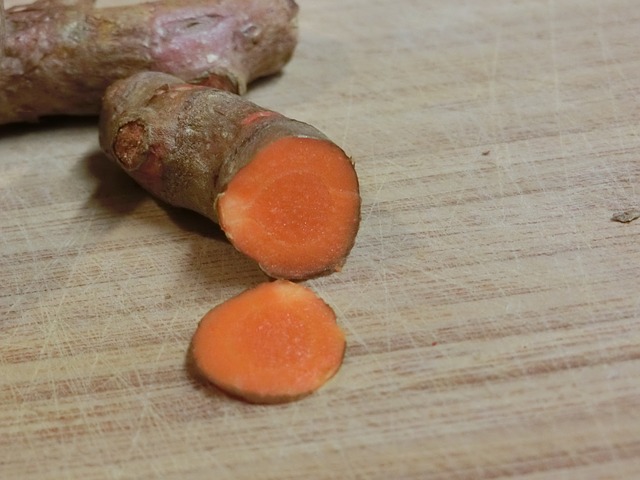 Turmeric is a perennial rhizome herb that grows well in most climates but is originally from South Asia, and it is part of the ginger family of plant species. Its roots are a deep orange/red color and contain many healing qualities. Most people use only the roots of the plant in their cooking. The roots are harvested during the rainy season and then they left to dry and are ground to a powder before use. Many traditional cultures in South Asia and the Middle East use turmeric in their everyday cooking as it adds wonderful flavor and color to any dish. Turmeric has also been used a natural dye to color fabrics to sew into many things.
Turmeric is a perennial rhizome herb that grows well in most climates but is originally from South Asia, and it is part of the ginger family of plant species. Its roots are a deep orange/red color and contain many healing qualities. Most people use only the roots of the plant in their cooking. The roots are harvested during the rainy season and then they left to dry and are ground to a powder before use. Many traditional cultures in South Asia and the Middle East use turmeric in their everyday cooking as it adds wonderful flavor and color to any dish. Turmeric has also been used a natural dye to color fabrics to sew into many things.
How Can It Help?
There is a component of turmeric called curcumin, which has many benefits for the human body. Most notably it is used to ease pain and help reduce inflammation. People might use it to help with things like fibromyalgia, arthritis, back pain, Runner's Knee, Lupus, Gout and while recovering from an injury. These people might otherwise use non-steroidal anti-inflammatories (NSAIDs) or over the counter pain relieving pills to help ease their pain. But these medications can actually 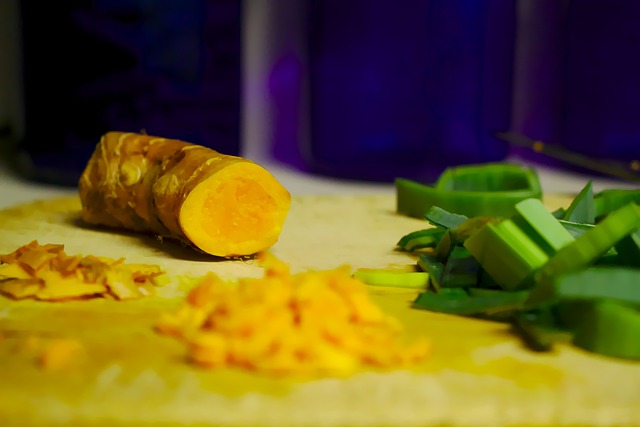 contribute to a person’s overall inflammatory load and thus contribute to their pain. NSAIDs and over the counter pain relievers come with other risks as well such as damage to the kidneys, gastrointestinal system, and cardiovascular system. There are studies that show that curcumin can be a very real alternative to many medications.
contribute to a person’s overall inflammatory load and thus contribute to their pain. NSAIDs and over the counter pain relievers come with other risks as well such as damage to the kidneys, gastrointestinal system, and cardiovascular system. There are studies that show that curcumin can be a very real alternative to many medications.
A low to no-risk option to help people who suffer from these pain-causing conditions is to try adding turmeric to your diet. Dried turmeric is easy to find at your local grocery store in the dried herbs and spices section, and is bright yellow in color. You can also find fresh turmeric in the vegetable section at your local grocery store. Be sure to pair it with a little black pepper, as pepper helps to activate the properties of turmeric that help to relieve pain and reduce inflammation.
How Can You Use It?
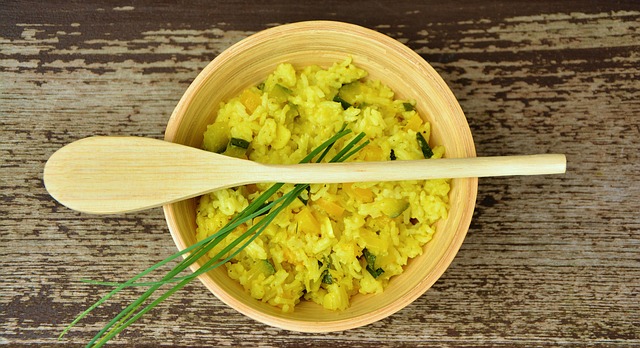 You can make all kinds of delicious dishes using turmeric like curries, add a teaspoon of it to your rice as it is cooking for a wonderful color, add it to soups, put it in scrambled eggs, add it to healing smoothies, or sprinkle it along with a little Celtic salt and some black pepper over roasted vegetables like potatoes, broccoli, or cauliflower.
You can make all kinds of delicious dishes using turmeric like curries, add a teaspoon of it to your rice as it is cooking for a wonderful color, add it to soups, put it in scrambled eggs, add it to healing smoothies, or sprinkle it along with a little Celtic salt and some black pepper over roasted vegetables like potatoes, broccoli, or cauliflower.
 You can also steep a tasty tea with turmeric, cinnamon, and honey. You can even make a delicious warm milk to help you sleep better as well. Good quality sleep is something that many people with chronic pain know is difficult to achieve, and sleep is so important to help the body heal. There are many recipes online that will inspire you to add this amazing root to your cooking.
You can also steep a tasty tea with turmeric, cinnamon, and honey. You can even make a delicious warm milk to help you sleep better as well. Good quality sleep is something that many people with chronic pain know is difficult to achieve, and sleep is so important to help the body heal. There are many recipes online that will inspire you to add this amazing root to your cooking.
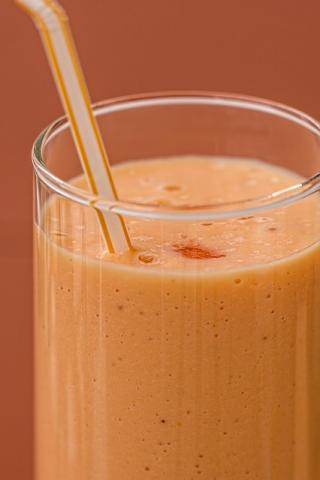 If you want to add fresh turmeric to your diet, prepare it by washing the root and peeling the tough skin off with a vegetable peeler, just like you would with a piece of ginger or a carrot. Then chop it finely, grate it on a cheese grater, or cut it into small chunks. Then add this to a number of dishes! If a smoothie sounds good, toss the fresh, chopped root into a blender.
If you want to add fresh turmeric to your diet, prepare it by washing the root and peeling the tough skin off with a vegetable peeler, just like you would with a piece of ginger or a carrot. Then chop it finely, grate it on a cheese grater, or cut it into small chunks. Then add this to a number of dishes! If a smoothie sounds good, toss the fresh, chopped root into a blender.
What to Look for in a Supplement
If you are not handy in the kitchen, have no fear! You can still easily enjoy the benefits of the curcumin found in turmeric without having to cook. There are many supplements out there that contain curcumin. Make sure you choose one that also contains piperine, which is the component in black pepper that helps to active the pain relieving qualities in curcumin. Also look for a supplement that contains at least 95 percent active curcuminoids.
Final Thoughts
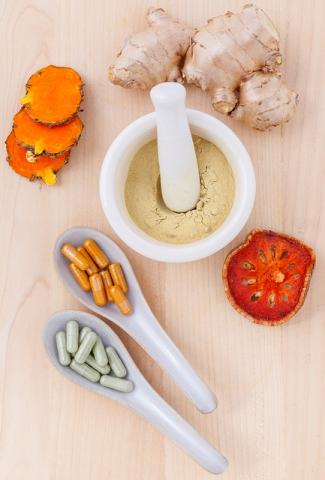 Having patience is key when using turmeric in cooking or taking curcumin supplements. It takes about 8 weeks of regular consumption in order to see its benefits. This is because the amount of the active substance that is in turmeric has to build up in your system before it can reach a beneficial level for your body.
Having patience is key when using turmeric in cooking or taking curcumin supplements. It takes about 8 weeks of regular consumption in order to see its benefits. This is because the amount of the active substance that is in turmeric has to build up in your system before it can reach a beneficial level for your body.
Giving turmeric or curcumin a try is a no-risk solution to reduce inflammation, and to help ease the pain associated with conditions like fibromyalgia, arthritis, back pain, Runner's Knee, Lupus, Gout or while recovering from an injury. It is easy to add it to your everyday cooking and can be found easily at your local grocery store. If cooking is not your forte, herbal curcumin supplements are available as well.
For More Details about Anti-inflammatory Foods, (Click Here)
(Click Here) to see a great infographic about How to Naturally Relieve Inflammation
To check out our article 10 Ways to Relieve Inflammation, (Click Here)
You can check out our articles and infographics to learn a multitude of ways to start relieving your pain naturally!
At Real Time Pain Relief, we not only care about the quality ingredients that go into each and every one of our products – but also about the people who buy them. We hope this blog, and the articles posted on it, become a valued resource for your own personal journey to better health. We know natural products that reduce your pain at the source are important to you, and for more than 17 years, our Real Time Pain Relief rub-on has been providing fast acting, targeted pain relief with natural ingredients to thousands of satisfied customers. From the useful information on this blog to our high-quality natural products, we hope you become one of the thousands of customers telling us they “Enjoy Living Again!”
Sources:
-
http://www.thekitchn.com/19-delicious-turmeric-recipes-to-spice-up-your-life-223795
-
http://www.drweil.com/vitamins-supplements-herbs/herbs/curcumin-or-turmeric/
-
The Real Vitamin and Mineral Book by Shari Lieberman PhD
-
Prescription for Nutritional Healing by Phyllis A Balch
-
Herbal Recipes by Rosemary Gladstar
-
The Encyclopedia of Healing Foods by Michael Murray ND
- Log in to post comments

